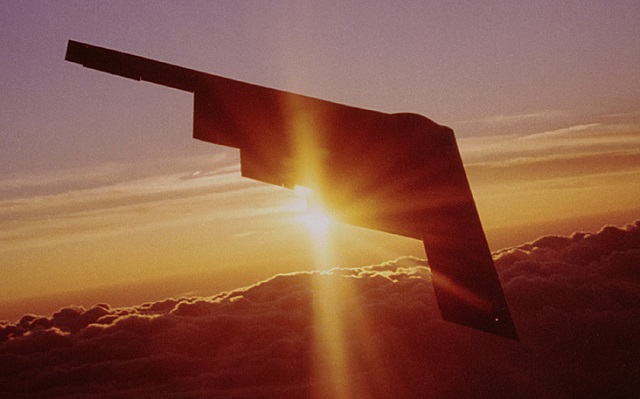Northrop Grumman is the latest company to demonstrate compliance with the US Air Force’s new open mission system (OMS) standards, with recent flight tests involving a B-2 Spirit bomber and a NASA Global Hawk unmanned aerial vehicle.
Northrop says that a series of test flights in June demonstrated how quickly OMS-compliant subsystems and payloads could be integrated with the B-2, as well as aircraft that conform to the new air force standards for software and hardware.
In the most recent test at Edwards AFB in California, a company-owned Gulfstream G550 testbed aircraft acted as a surveillance asset, broadcasting an enemy location to a battle management unit on the ground. The unit then tasked a nearby B-2 to destroy the target.
The attack was simulated, and the information was exchanged via an OMS-compliant, line-of-sight Link 16 data link. The B-2 was diverted from its flight path and guided to the target using a specialised OMS-compliant auto-routing function, Northrop said in a statement this week.

Northrop Grumman
The mission scenario is similar to of one involving a Northrop Grumman E-8C JSTARS aircraft, and the air force has said any future E-8 replacement aircraft must comply with the OMS standards, so that it is cheaper and easier to integrate new capabilities.
A Northrop spokesman confirmed that the G550 is the same radar-carrying testbed aircraft currently supporting the company’s next-generation JSTARS programme.
“Northrop Grumman is committed to OMS and modular open architectures,” says Tom Vice, president of the company’s aerospace systems division. “Our recent OMS demonstrations on the Global Hawk and the B-2 long-range strike bomber have proved to be very successful.”
Northrop says the OMS infrastructure for the B-2 was defined and integrated in six weeks, and the development and integration was funded by the company.
The USAF B-2 programme office supported the exercise, and expects that moving to OMS will allow the B-2 to be upgraded much faster and at less cost.
“This demonstration paves the way for the B-2 weapon system to provide new operational capability well into the future at an affordable cost,” Brig Gen Eric Fick, air force programme executive officer for fighters and bombers, said in the statement.
The flight tests were conducted around the same time that Lockheed Martin used OMS-complaint payloads to translate and and relay data between an F-22 Raptor and an F-18 Hornet using a high-altitude U-2 aircraft.
Source: FlightGlobal.com
















